Master Pickleball Basics
New to pickleball? Just have a question? Check out our comprehensive guide to the game’s basic rules and key strategies.

STARTING THE RALLY
- Underhand Serve: The serve must be made with an underhand stroke, contacting the ball below the waist.
- Diagonal Direction: The serve must be hit diagonally crosscourt and land within the boundaries of the opposite service court.
- One Serve Attempt: Only one serve attempt is allowed, except in the case of a let (where the ball touches the net and lands in the correct service court).
- Double Bounce Rule: After the serve, each team must let the ball bounce once on their side before volleys are allowed.
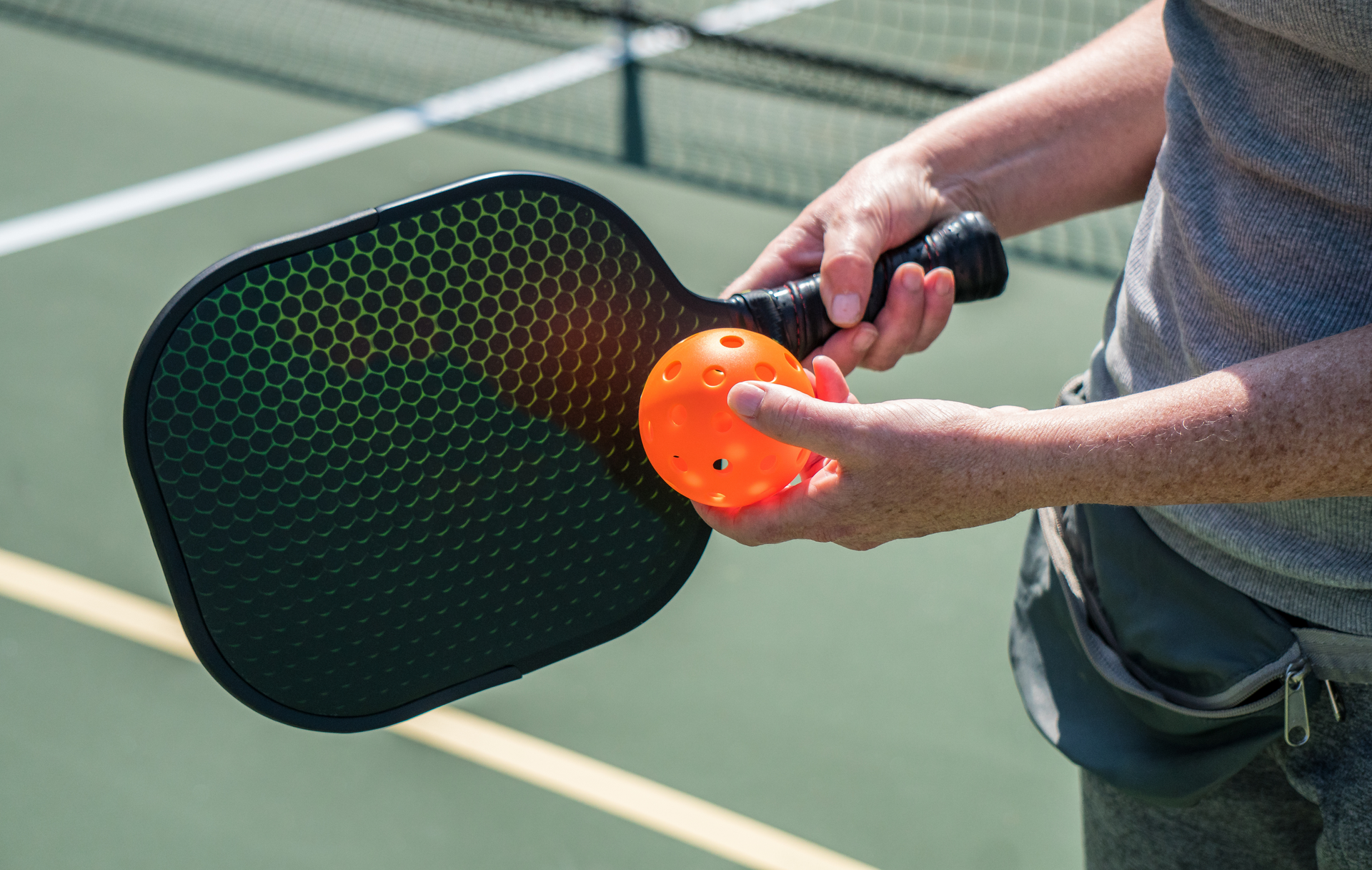
HOW TO WIN POINTS
- Points: Points can only be scored by the serving team.
- Games: Games are typically played to 11 points, and a team must win by 2 points.
- Winning: Matches are usually best 2 out of 3 games.
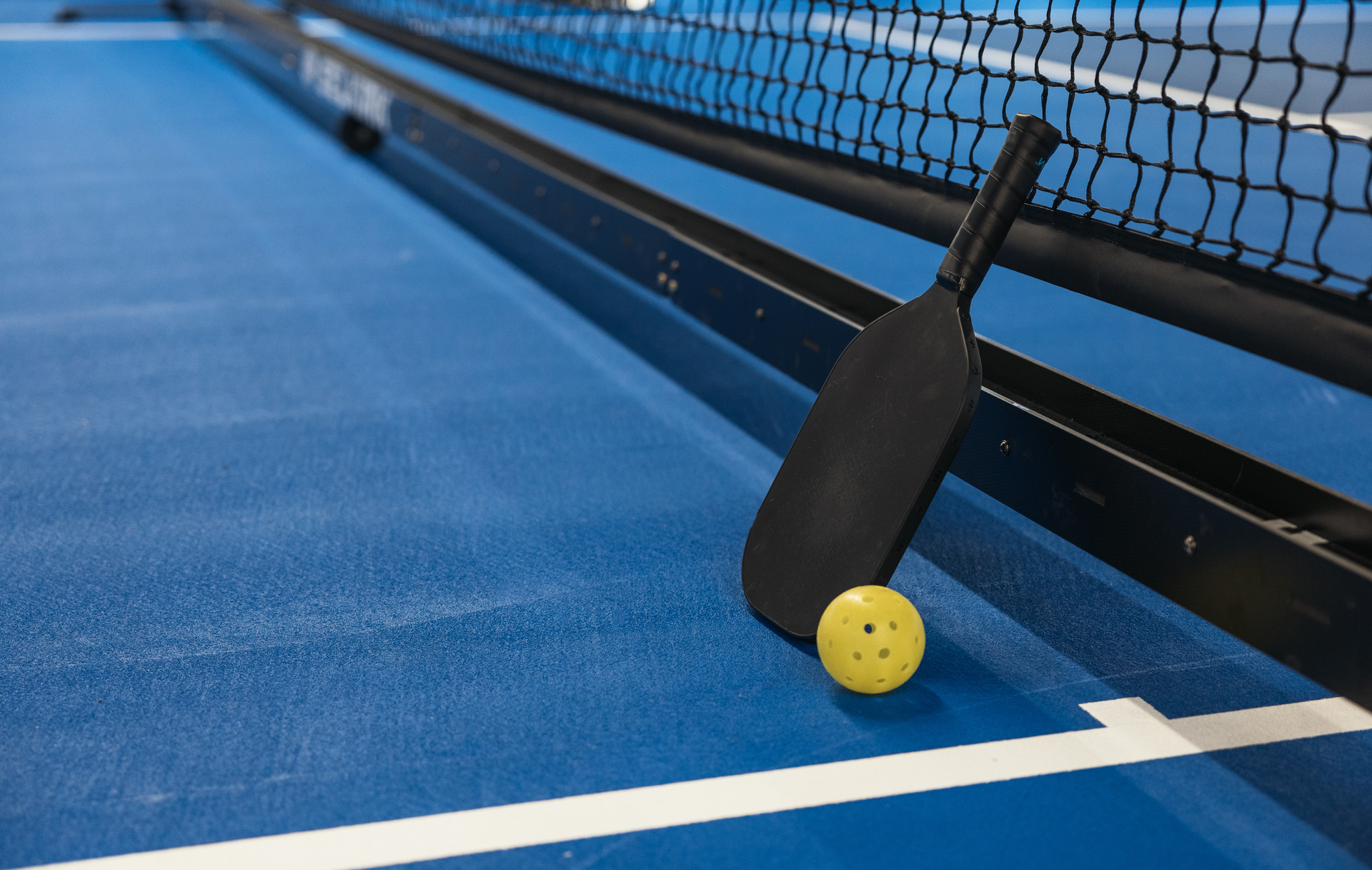
Non-Volley Zone
- The Kitchen: The non-volley zone, often called "the kitchen," is a 7-foot area on both sides of the net. Players cannot volley (hit the ball in the air) while standing in this zone.
- Rules: You can enter the kitchen to play a ball that has bounced, but you must exit before volleying.
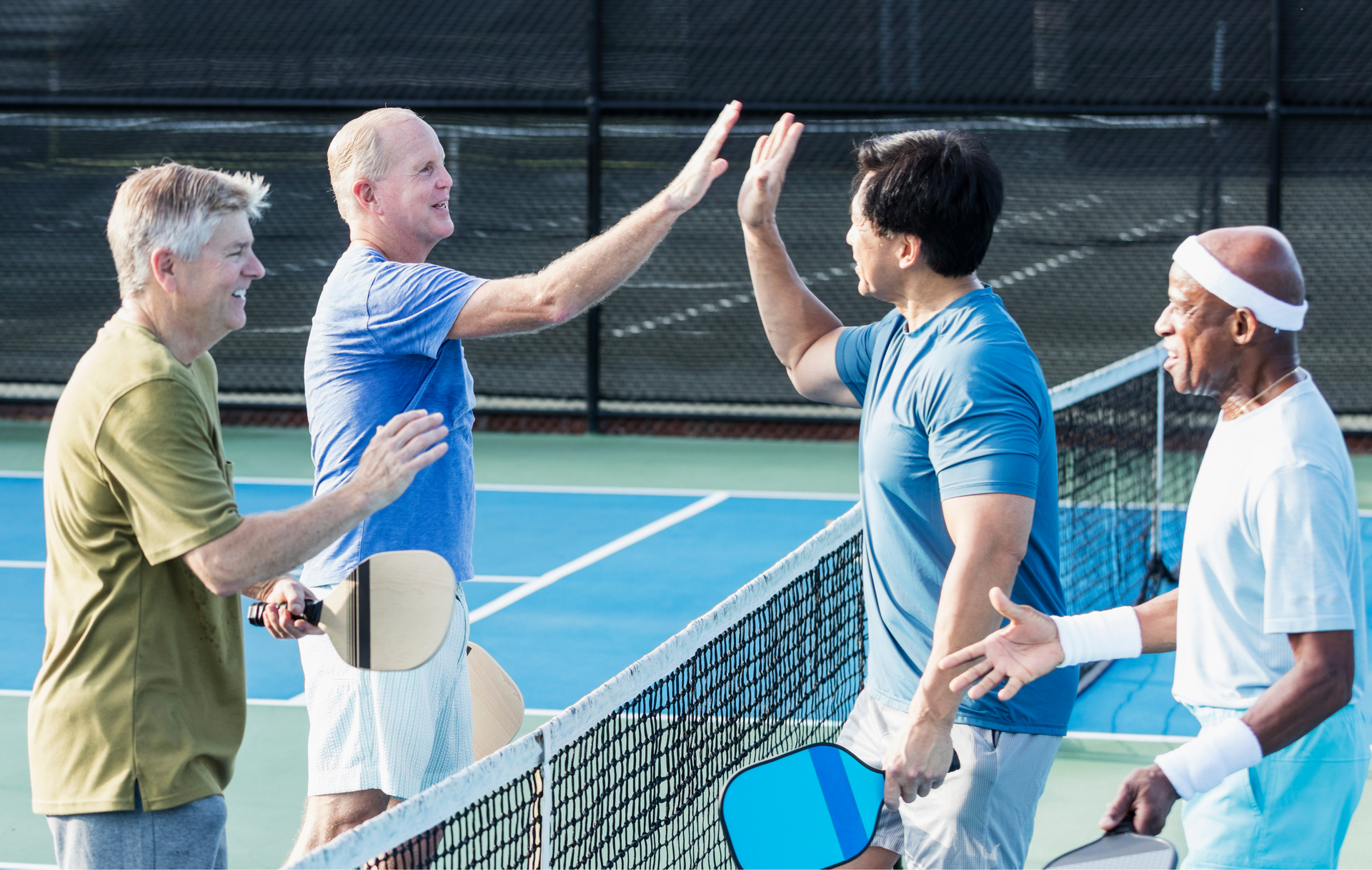
BASIC RULES
- Double Bounce Rule: After the serve, each team must let the ball bounce once on their side before volleys are allowed.
- Volleys: Volleys (hitting the ball before it bounces) must be done outside of the non-volley zone.
- Faults: Faults include hitting the ball out of bounds, not clearing the net, stepping into the non-volley zone to volley a ball, and violations of the double bounce rule.
- Serving Position: The server starts from the right-hand service square and alternates after winning a point.
- Partner Positioning: When serving, the server's partner stands behind the baseline. When receiving, partners stand on the court diagonally opposite each other.
- Rotation: When the serving team wins a point, the server switches sides and serves to the opposite court. If they lose the point, the serve goes to the other team.

TACTICS FOR SUCCESS
- Dinking: A soft shot that drops into the opponent’s non-volley zone, making it difficult to return.
- Lobbing: Hitting the ball high and deep to force the opponents back from the net.
- Smashing: A powerful overhead shot aimed at ending the rally.
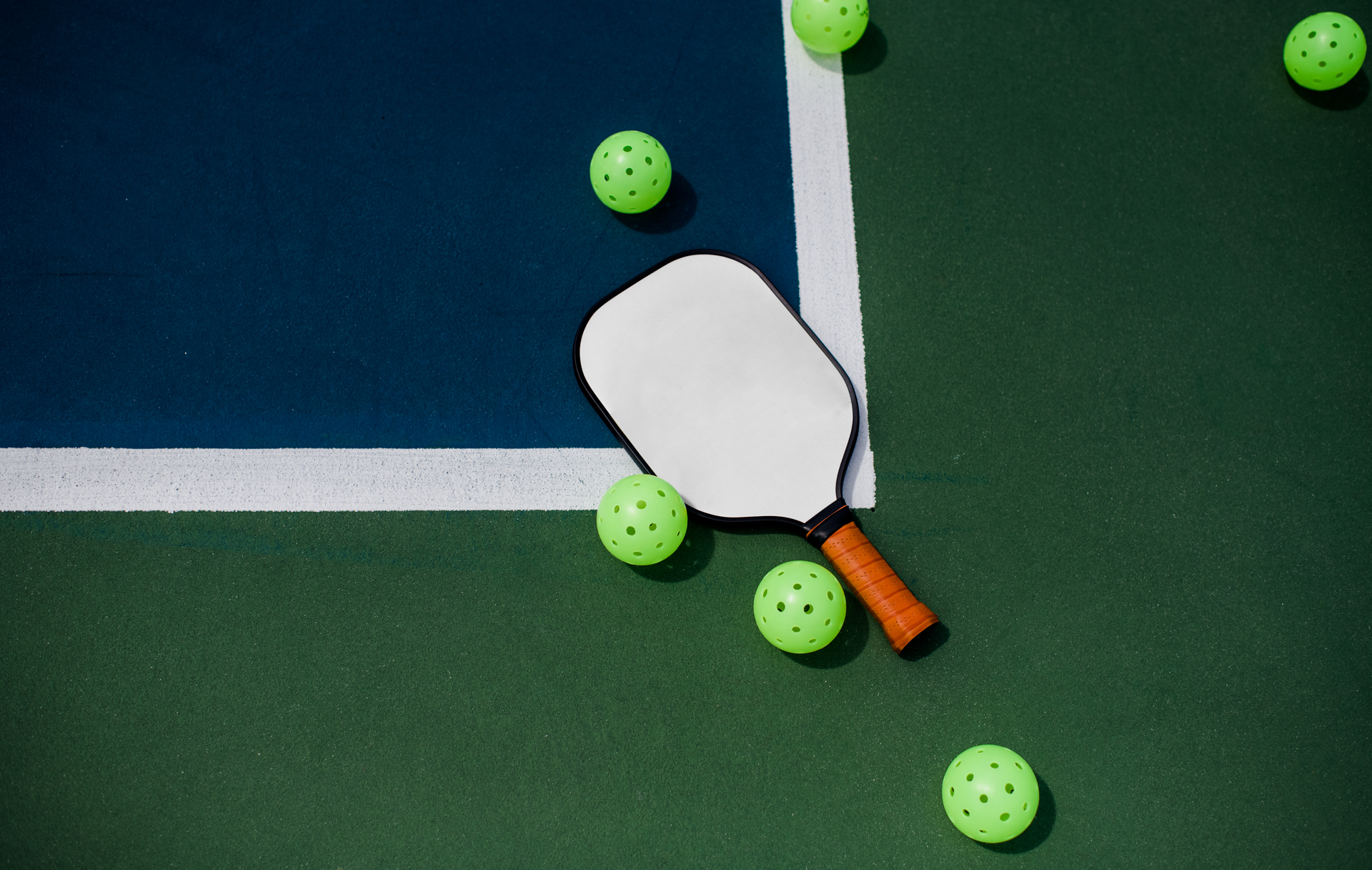
Common Faults
- Hitting the ball out of bounds.
- Not clearing the net.
- Stepping into the non-volley zone to volley a ball.
- Violations of the double bounce rule.

STARTING THE RALLY
- Underhand Serve: The serve must be made with an underhand stroke, contacting the ball below the waist.
- Diagonal Direction: The serve must be hit diagonally crosscourt and land within the boundaries of the opposite service court.
- One Serve Attempt: Only one serve attempt is allowed, except in the case of a let (where the ball touches the net and lands in the correct service court).
- Double Bounce Rule: After the serve, each team must let the ball bounce once on their side before volleys are allowed.

HOW TO WIN POINTS
- Points: Points can only be scored by the serving team.
- Games: Games are typically played to 11 points, and a team must win by 2 points.
- Winning: Matches are usually best 2 out of 3 games.

Non-Volley Zone
- The Kitchen: The non-volley zone, often called "the kitchen," is a 7-foot area on both sides of the net. Players cannot volley (hit the ball in the air) while standing in this zone.
- Rules: You can enter the kitchen to play a ball that has bounced, but you must exit before volleying.
Item Link

BASIC RULES
- Double Bounce Rule: After the serve, each team must let the ball bounce once on their side before volleys are allowed.
- Volleys: Volleys (hitting the ball before it bounces) must be done outside of the non-volley zone.
- Faults: Faults include hitting the ball out of bounds, not clearing the net, stepping into the non-volley zone to volley a ball, and violations of the double bounce rule.
- Serving Position: The server starts from the right-hand service square and alternates after winning a point.
- Partner Positioning: When serving, the server's partner stands behind the baseline. When receiving, partners stand on the court diagonally opposite each other.
- Rotation: When the serving team wins a point, the server switches sides and serves to the opposite court. If they lose the point, the serve goes to the other team.

TACTICS FOR SUCCESS
- Dinking: A soft shot that drops into the opponent’s non-volley zone, making it difficult to return.
- Lobbing: Hitting the ball high and deep to force the opponents back from the net.
- Smashing: A powerful overhead shot aimed at ending the rally.
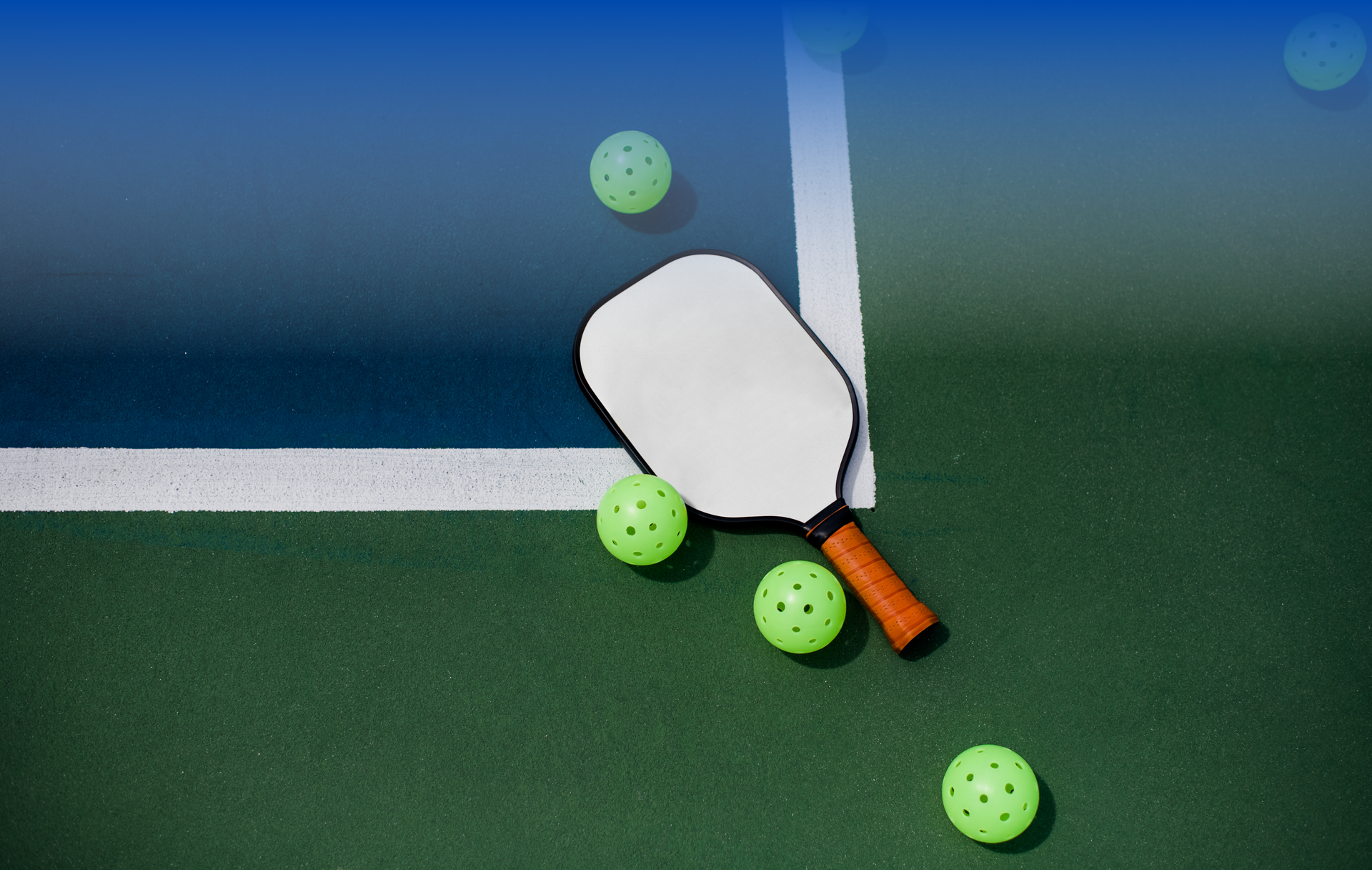
Common Faults
- Hitting the ball out of bounds.
- Not clearing the net.
- Stepping into the non-volley zone to volley a ball.
- Violations of the double bounce rule.

